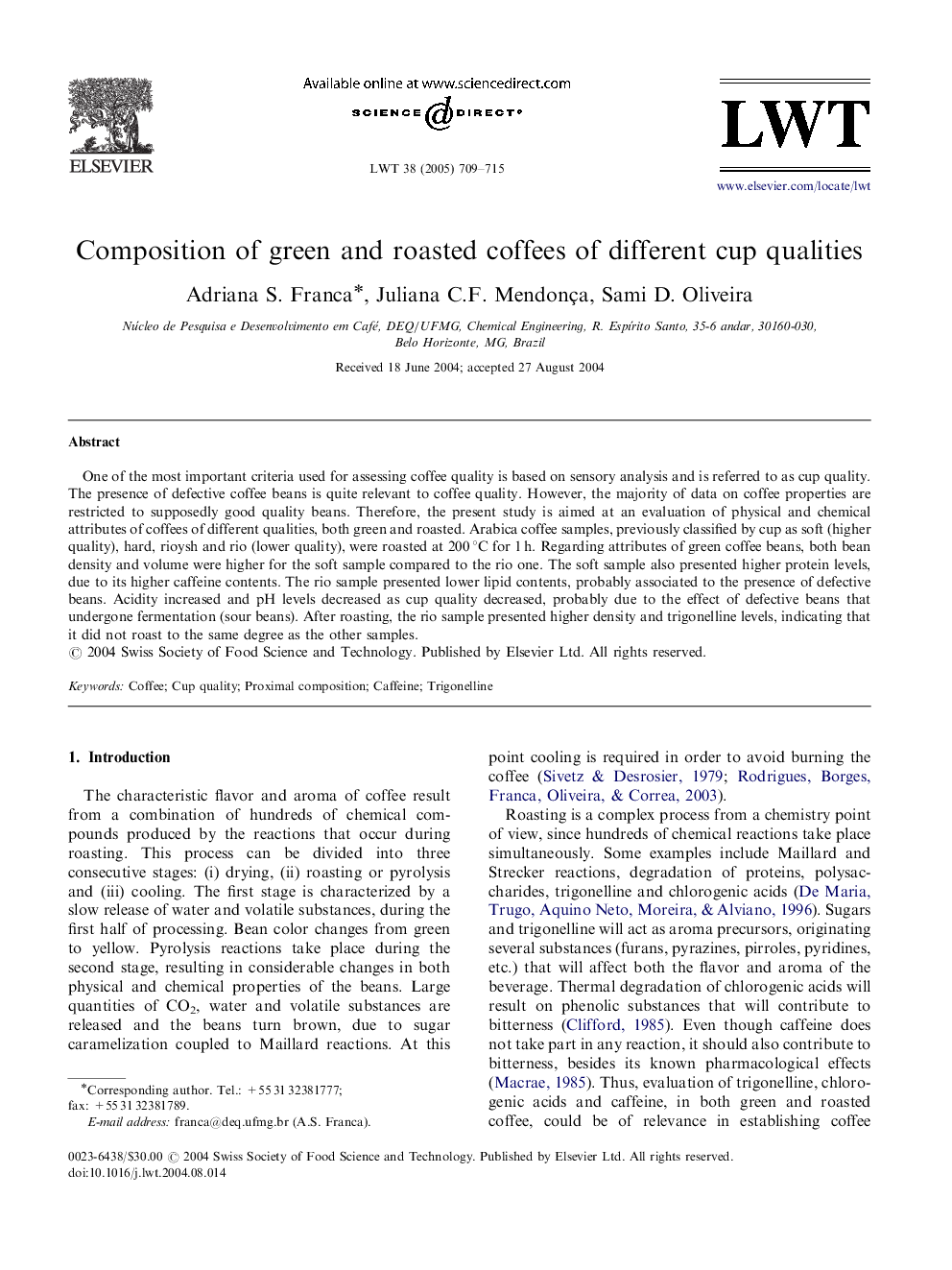| Article ID | Journal | Published Year | Pages | File Type |
|---|---|---|---|---|
| 9488558 | LWT - Food Science and Technology | 2005 | 7 Pages |
Abstract
One of the most important criteria used for assessing coffee quality is based on sensory analysis and is referred to as cup quality. The presence of defective coffee beans is quite relevant to coffee quality. However, the majority of data on coffee properties are restricted to supposedly good quality beans. Therefore, the present study is aimed at an evaluation of physical and chemical attributes of coffees of different qualities, both green and roasted. Arabica coffee samples, previously classified by cup as soft (higher quality), hard, rioysh and rio (lower quality), were roasted at 200 °C for 1 h. Regarding attributes of green coffee beans, both bean density and volume were higher for the soft sample compared to the rio one. The soft sample also presented higher protein levels, due to its higher caffeine contents. The rio sample presented lower lipid contents, probably associated to the presence of defective beans. Acidity increased and pH levels decreased as cup quality decreased, probably due to the effect of defective beans that undergone fermentation (sour beans). After roasting, the rio sample presented higher density and trigonelline levels, indicating that it did not roast to the same degree as the other samples.
Related Topics
Life Sciences
Agricultural and Biological Sciences
Food Science
Authors
Adriana S. Franca, Juliana C.F. Mendonça, Sami D. Oliveira,
